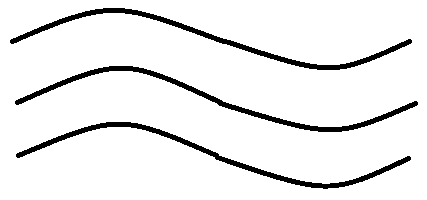
Among the following the branched chain polymer is:
(A) Polyvinyl chloride
(B) Bakelite
(C) Low density polythene
(D) High density polythene
Answer
491.7k+ views
Hint: This polymer has high branching and is formed by free radical addition and H abstraction process. Also it is formed under very high pressure and temperature.
Complete step by step answer:
Branched chain polymers are those polymers which have a linear structure but have some branching as well.
Now let us talk about these 4 polymers individually.
-First we will see about polyvinyl chloride:
It is a synthetic plastic polymer. It is a linear shaped polymer made by the polymerisation of vinyl chloride (
Its preparation reaction can be written as:

Since we can see that it is linear in shape (no branching present) it cannot be a branched chain polymer.
-About Bakelite:
It is a cross linked polymer and thermosetting type of polymer. It is formed using phenol (

This novolac is further heated with formaldehyde to form a cross linked polymer called Bakelite.

Since we can see that Bakelite has a cross linked 3D structure it cannot be a branched chain polymer.
-Low density polythene (LDP): It is formed by polymerisation of ethene (

-High density polythene (HDP): It is formed when ethene (

So, the correct option is: (C) Low density polythene.
Note: The high density polymer is linear and still it has a high density because the linear chains of polyethene are bonded to each other by very strong forces and so are closely packed, while on the other hand low density polymer has higher branching and so the intermolecular forces (dipole induced dipole attraction) are weaker. This also makes the LDP weaker than HDP with lesser tensile strength.
Complete step by step answer:
Branched chain polymers are those polymers which have a linear structure but have some branching as well.
Now let us talk about these 4 polymers individually.
-First we will see about polyvinyl chloride:
It is a synthetic plastic polymer. It is a linear shaped polymer made by the polymerisation of vinyl chloride (
Its preparation reaction can be written as:

Since we can see that it is linear in shape (no branching present) it cannot be a branched chain polymer.
-About Bakelite:
It is a cross linked polymer and thermosetting type of polymer. It is formed using phenol (

This novolac is further heated with formaldehyde to form a cross linked polymer called Bakelite.

Since we can see that Bakelite has a cross linked 3D structure it cannot be a branched chain polymer.
-Low density polythene (LDP): It is formed by polymerisation of ethene (

-High density polythene (HDP): It is formed when ethene (

So, the correct option is: (C) Low density polythene.
Note: The high density polymer is linear and still it has a high density because the linear chains of polyethene are bonded to each other by very strong forces and so are closely packed, while on the other hand low density polymer has higher branching and so the intermolecular forces (dipole induced dipole attraction) are weaker. This also makes the LDP weaker than HDP with lesser tensile strength.
Latest Vedantu courses for you
Grade 11 Science PCM | CBSE | SCHOOL | English
CBSE (2025-26)
School Full course for CBSE students
₹41,848 per year
Recently Updated Pages
Express the following as a fraction and simplify a class 7 maths CBSE

The length and width of a rectangle are in ratio of class 7 maths CBSE

The ratio of the income to the expenditure of a family class 7 maths CBSE

How do you write 025 million in scientific notatio class 7 maths CBSE

How do you convert 295 meters per second to kilometers class 7 maths CBSE

Write the following in Roman numerals 25819 class 7 maths CBSE

Trending doubts
Give 10 examples of unisexual and bisexual flowers

Draw a labelled sketch of the human eye class 12 physics CBSE

Differentiate between homogeneous and heterogeneous class 12 chemistry CBSE

Differentiate between insitu conservation and exsitu class 12 biology CBSE

What are the major means of transport Explain each class 12 social science CBSE

Franz thinks Will they make them sing in German even class 12 english CBSE




